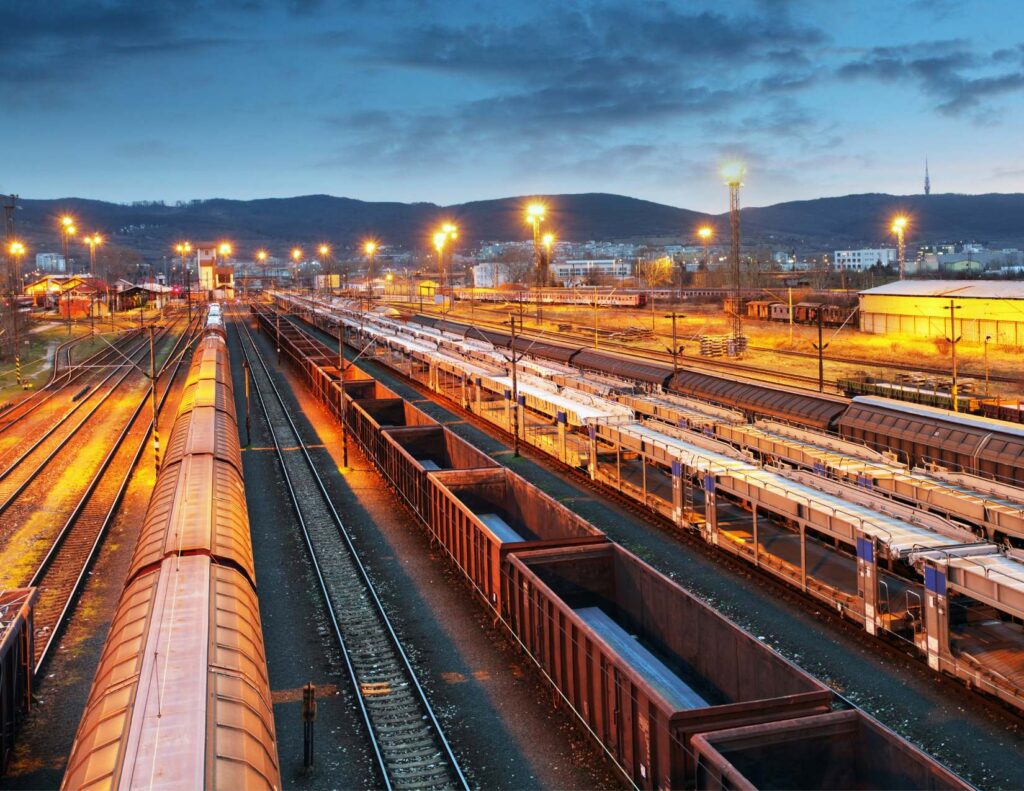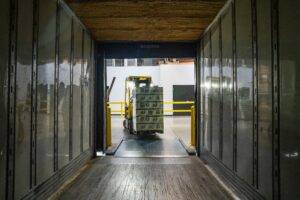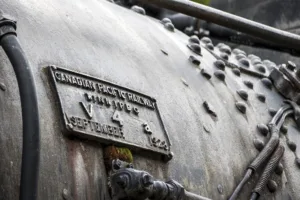Railways have historically been one of the most significant modes of transit for passengers and freight; even now, they continue to play a vital role. Rail transport is still essential to the Polish economy and the rest of the world, despite the fact that technological advancements are making it possible for roads, airports, and port facilities to accommodate a growing number of transport vehicles.
The increasing popularity of transporting freight through railways can be attributed largely to the fact that this method of transport is both cost-effective and dependable. Even though road transport is currently the most popular method of transporting freight, an increasing number of shipping services are opting to carry their less time-sensitive shipments via rail. Shippers are selecting rail freight as a mode of transportation not just because it is economical but also because they are concerned about its environmental impact. Keep reading this blog to learn a little more about Rail Freight transportation and the factors that have contributed to the resurgence of interest in rail transportation in modern times.
An Overview of Rail Freight Transportation
As the name implies, rail service is primarily concerned with the rapid and economical transport of large quantities of goods over long distances via train. Trains can only go between terminals and yards equipped to receive the type of bulk cargo being transported. Rail service is not a direct competition to truckload in terms of cost or transit time, unlike intermodal. As a result of its unique nature, this service is not appropriate for all materials; however, when it is a good fit, it can result in significant savings for bulk items.
Most businesses that could employ this service cannot do so because the freight must be moved from one rail-sided structure to another, and buildings with such access are uncommon due to the high cost and complicated logistics involved in creating such a facility. Working with a logistics partner that offers cross-docking services to transfer cargo from trucks to rail cars is one solution to this problem.
The train is an ideal logistics provider for any business that regularly moves large quantities of bulky materials. Still, many organizations miss out on the possibility of using rail logistics services for large-scale special projects. Companies can save tens of thousands of dollars by outsourcing specific projects like these to those specializing in train service but those who don’t have any idea where to turn for assistance.
Benefits of Choosing Rail Freight
1. Cost-Effectiveness
This is a major perk of taking the train instead than other modes of transportation. When compared to other modes of transport, the cost of shipping products by train is lower since trains consume significantly less fuel. However, this is not always the case, as it depends on whether a new train is being built specifically to carry the item, or if it is simply being added to an existing train. The cost of delivering the item over the same distance using another mode of transportation would be more than if you were to place it on an already operating train.
The fact that trains are able to carry a lot more freight than other modes of transportation also drives up the cost of travel. Compared to a heavy goods vehicle, many more items can be transported in a single train, hence the cost per item is lower (HGV). Last but not least, you can save even more money by sharing a train charter with another business that has a similar hauling demand along the same route. One of the most common methods that businesses transport their goods is through joint chartering.
2. Reliability
The days of disastrous railroad catastrophes are long gone, and in the previous several decades, railroad safety and security measures have seen significant advancements. Since then, rail freight has evolved into one of the safest methods for delivering goods of any currently available option. In addition, with advancements in precision and punctuality, it has become an extremely reliable means of transit; the only other mode of transport that is more punctual is air freight.
Because it travels along rails, there is nothing that can get in the way of a train as it makes its trip, which means external causes like traffic or construction won’t cause any delays. Therefore, if on-time delivery of your items is of the utmost importance to you, you should choose this option.
3. More environmentally friendly
To live in this day and age, we have no choice but to show concern for our earth. Compared to air freight and the combination of sea and air freight, rail freight is a more environmentally friendly mode of transportation than any of the other two options. The decrease in greenhouse gas emissions is the most significant positive impact of rail freight on the environment. When considering the main modes of transportation in terms of their CO2 emissions, it is abundantly evident that rail freight is the most environmentally friendly option.
The ocean and the atmosphere absorb approximately 77 tonnes of CO2 each year. However, the use of CO2 by rail freight is only five tonnes. In comparison, this is a drop in the ocean, which means that if maritime freight takes too long, the most environmentally beneficial option is to ship goods by rail.
4. Safe & Efficient With GPS Tracking
The safety of railroad travel has seen major advancements during the past few decades. Today, shipping freight by rail is widely regarded as one of the safest transportation methods. We see a considerable increase in the overall performance of rail freight due to ongoing improvements in railway infrastructure, including rail tracks, routings, terminals, and railway border crossing stations.
Because the trains are equipped with GPS tracking, the cargo is safeguarded while in transit, reducing the likelihood of theft or loss. Carriers are able to determine the exact location of their clients’ shipments and follow up on milestones. As a result, they are also able to give comprehensive information on the position of containers and detect if anything unanticipated occurs while the shipments are in transit.
5. Greater Flexibility
Utilizing rail freight as part of your intermodal transport plan can be a fantastic way to increase your output without adding to your costs, making it a very attractive option. You can utilize the trucks to transport the shipment from the place of origin to the railway station, and then from the train station to the place where the shipment is going to be delivered to the consignee.
Wrapping Up
You will have an understanding of the significance of rail freight transportation services after reading the above information. If you believe that Rail Freight Transport Services would be a good fit for your freight, then the team here at I-Way logistics is ready to assist you in making that decision. In order to help you ship more efficiently, we will determine the solution that is best suited to meet your requirements. Get in touch with us right away to learn more about the choices you have and the amount of money you might potentially save.




